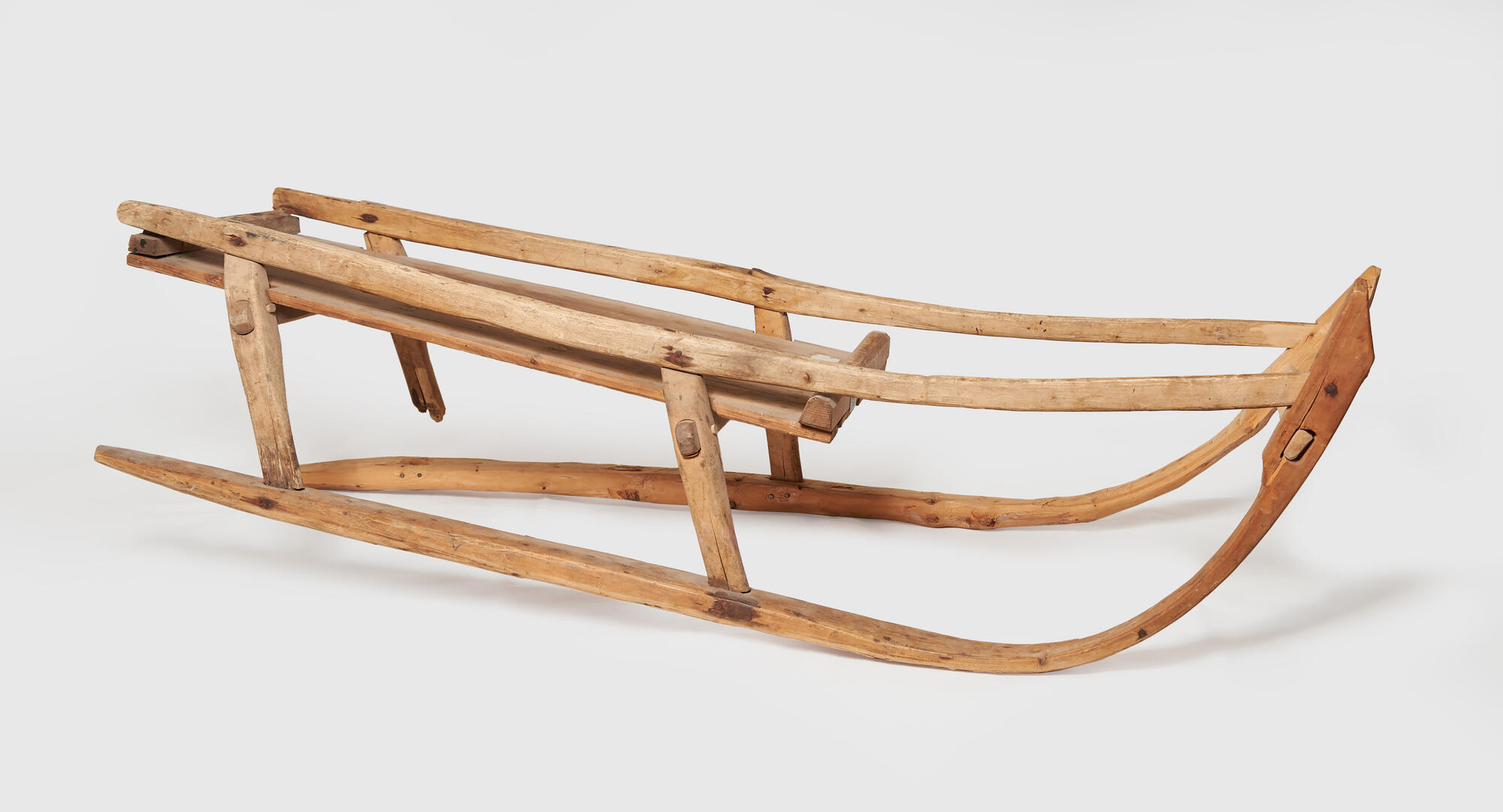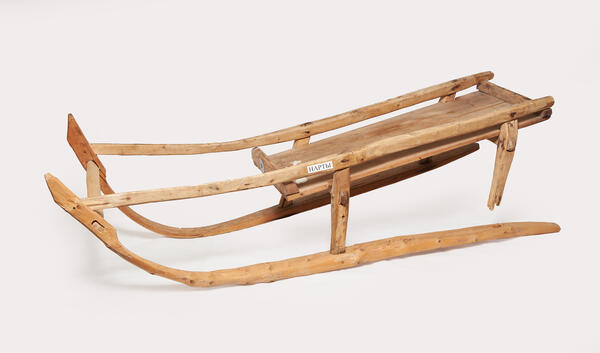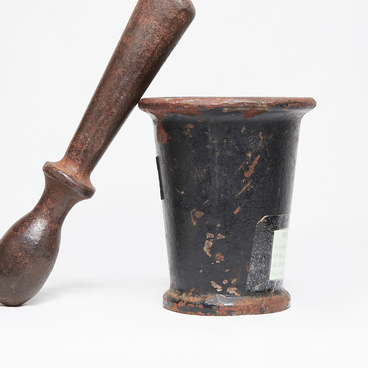In winter, in addition to skis, the Khanty use sleds to travel around. Long narrow Khanty sleds have two runners, with a load capacity of up to 400 kilograms. Sleds can be pulled by the owner himself, dogs or deer.
In the first case, the person himself pulls his sled by a long strap attached to the shaft; usually his dog helps him, “therefore, it is better if the sled will live as long as the dog that is used to it” (from the book by Vladislav Kulemzin and Nadezhda Lukina “Meet the Khanty”). In the other two cases, the driver (kayur) only manages the team with the help of a khorey. This three-meter-long pole tapers to the end and has a round wooden or bone tip with a spiral design.
A dog harness consists of traces and straps, which are put on the animal’s chest and under the front paws. A reindeer harness includes a complex halter made of belts and bone plates, reins, a chest strap, a leather belt and a drag rope that goes from the strap to the sled.
-sized sleds pulled by dogs were used to bring food and equipment to hunting and fishing storehouses and deliver prey to the camp. Women rode them to collect firewood and water.
Sleds pulled by reindeer are usually three meters in length. One sled can be pulled by a team of three to eight deer, depending on the time of year (more reindeer were needed in winter); people use them to travel and transport firewood, large quantities of food, and long poles for chums. In summer, boxes with clothes, shoes and household items are stored in sleds.
Men’s sleds are lighter. They are designed for fast driving and transportation of tools (sharpeners and axes) and hunting accessories (guns and lassos for catching wild reindeer). Women’s sleds are made slightly lower and longer, so that it is convenient to place a cradle with a baby.
Sleds are usually made of spruce or birch and assembled without a single nail: if necessary, the owner can make and replace any part using his hunting knife. Three or four vertical bars are attached with straps to the front ends of the runners curved upwards and tied together. A board is placed on top of the runners, and above it, as the 1878 issue of the magazine “Nature and Hunting” reports, “they make slots on the bars… that is, thin spruce poles are inserted through these slots.” A shaft bow with a rope is also attached to the ends of the runners.
The presented handmade sled was donated to the museum by Semyon Timofeyevich Voldin, a resident of the village of Bolshoy Atlym.



